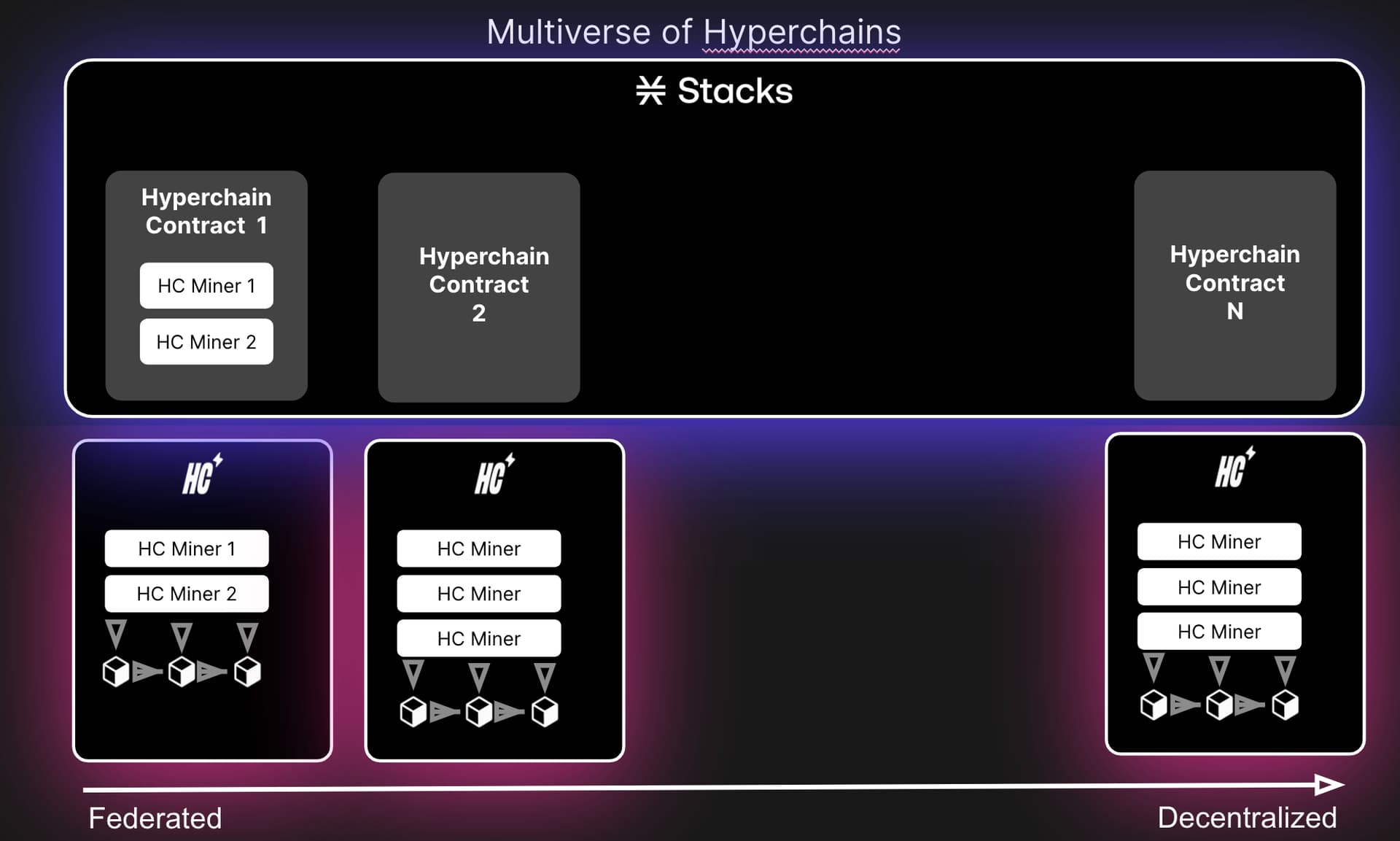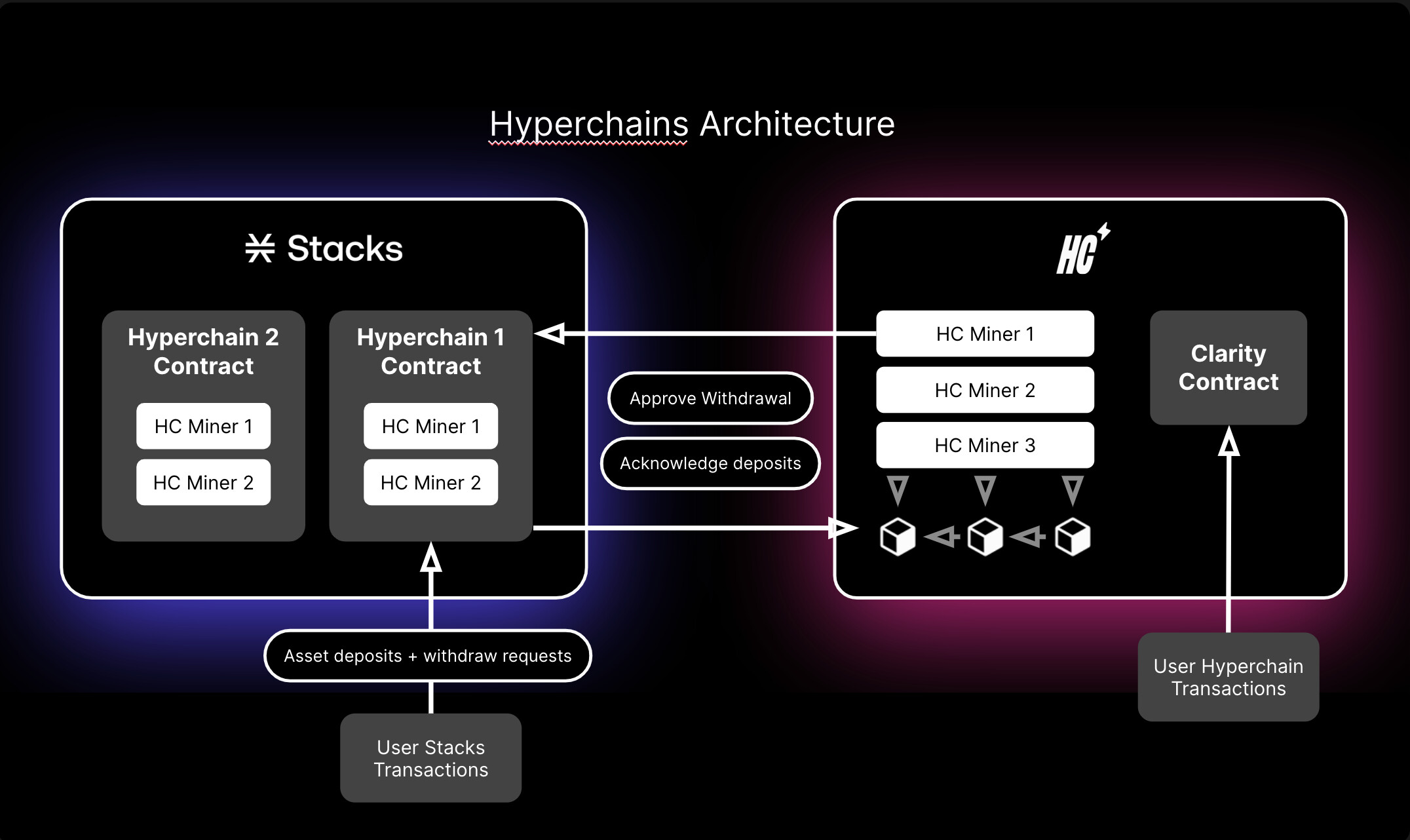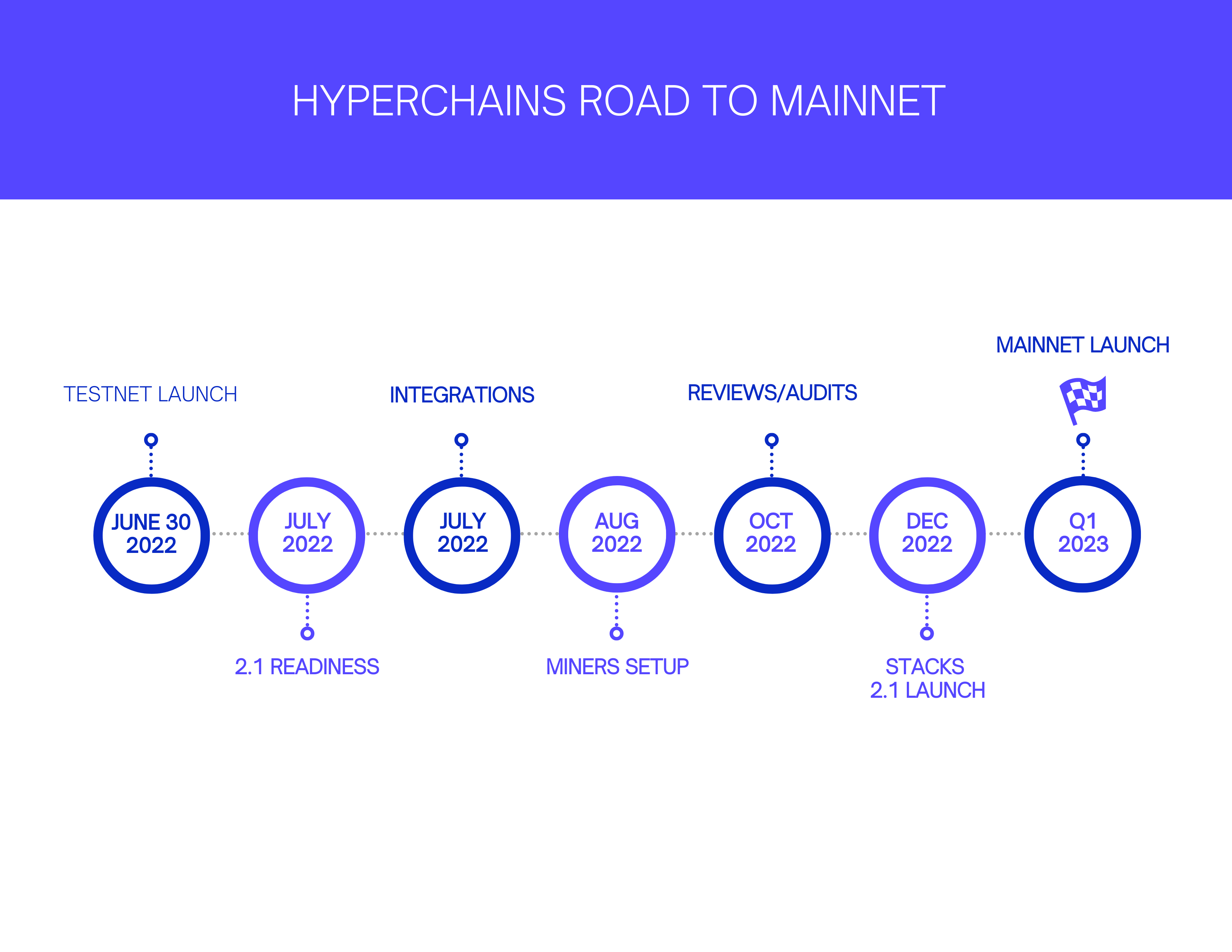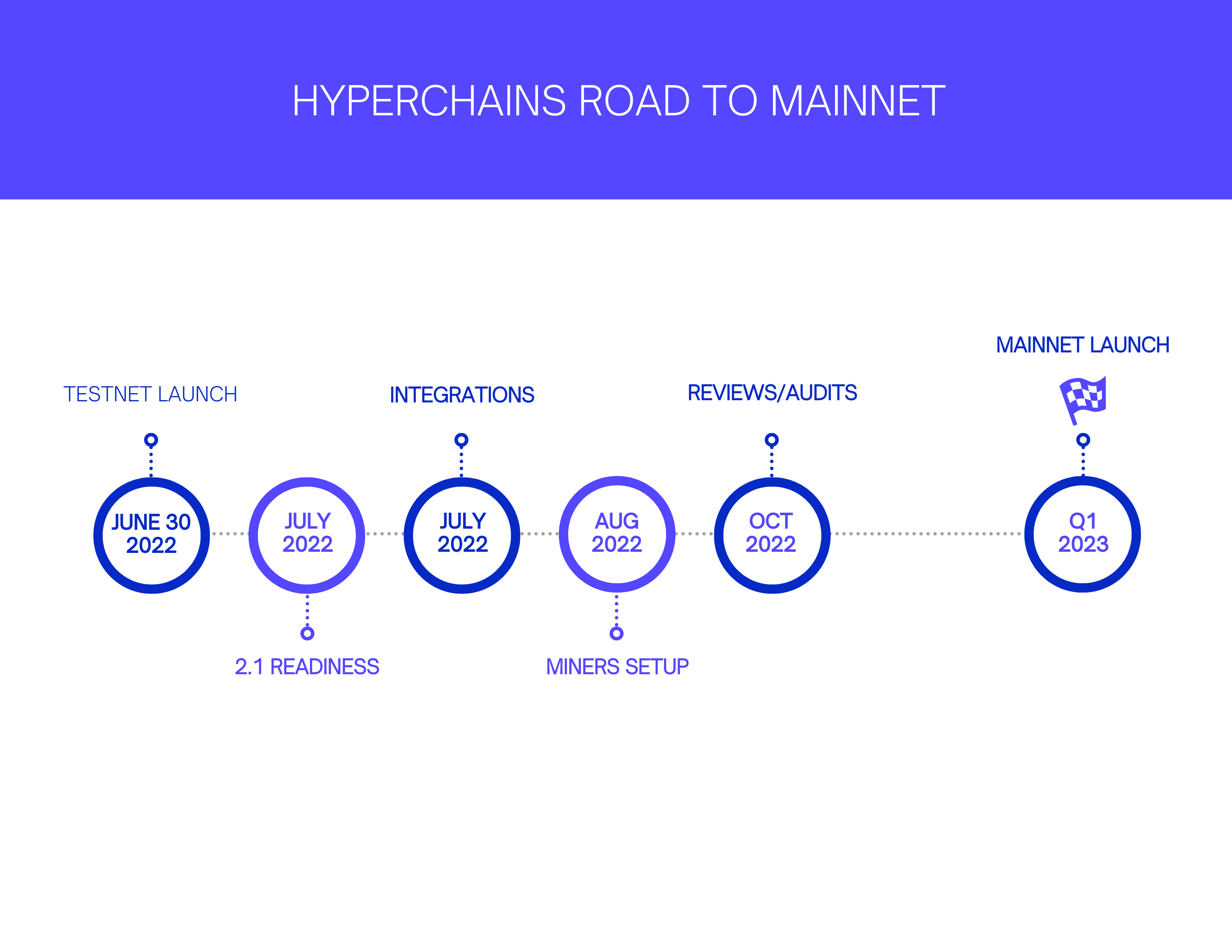Wen Hyperchains?
The update that you’ve all been eagerly waiting for! ~3months ago, we introduced you to Hyperchains, a layer-2 scaling solution for Stacks that we at Hiro have been building and it comes with the promise of high throughput, low latency workloads, so you can build fast and reliable experiences for your users.
TL;DR: We are live on TestNet and on target to launch our first NFT Use Case on TestNet in July 2022!
Federated vs. Truly Decentralized
It’s worth noting that the initial version of Hyperchains will be a Federated model. This will be the initial step in our hyperchains evolution. We are taking an iterative approach to building & rolling out this layer-2 solution, and there eventually will be versions that cater to multiple use cases ranging from federated to decentralized. However the complexity increases as we drive a more decentralized version. The Stacks mainchain itself will remain decentralized; anyone who wants to benefit from the improved performance can opt-in and hop on a hyperchain and experience life in the fast lane.

Under the hood
Aaron has a brilliant primer coming up soon on the inner workings of the Hyperchains contract, especially how deposits and withdrawals work through the Layer-1 smart contract.
Interacting with a hyperchain is exactly like interacting with a different network of the Stacks blockchain– transaction formats, RPC interfaces, and the Clarity VM are all the same (much like the difference between interacting with testnet and mainnet).
To deposit into a hyperchain, users submit an L1 transaction that invokes the deposit method on the smart contract. Similarly for withdrawals, when a user is finished interacting with a hyperchain, they submit an L1 transaction that invokes the withdraw method on that same smart contract.

Blocks, Microblocks and Statuses
Digging further, the status of transactions will parallel that on Layer-1:
Pending → In Microblock → Confirmed in Anchor Block
Microblocks will come with a finality guarantee in this version of Hyperchains.
Performance
One of the biggest driving factors has been increased throughput and low latency transactions. For higher-throughput, hyperchains allow for bigger blocks with more operations. We are expecting to see a 4X increase in throughput and reduced confirmation times from the current ~10mins → 1min.
To establish more concrete performance metrics, come help us test this on TestNet! Details are listed at the end of this post.
Timeline:
Here’s a high-level timeline for our launch to mainnet.

Tune In
Still can’t get enough of Hyperchains? Tune in to our various channels and events for more detailed information
Hop on the monthly developer call, happening today, May 26th, 2022 at 16:00 UTC & join a live discussion.
Register here!

Test, test, test
If you are rather keen on giving this a spin and providing early feedback, you’re lucky; we are looking for teams interested in testing out hyperchains! If you are interested, join in on the discussion and we will reach out to you to coordinate any testing.
See you on a Hyperchain soon!